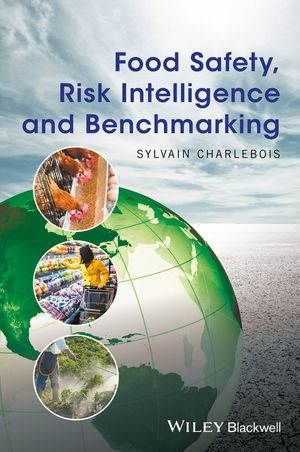What Is the Key for Risk Communication in Food Safety?

On World Food Safety Day on 7 June 2021, the European Food Safety Agency launched its new risk communication campaign entitled “Choose Safe Food” to encourage people to think critically about their everyday food choices. This brought to mind my experience at the World Health Organization (WHO) about fashioning global food safety messages, which presented several challenges. Firstly, the potential audience is vast (8.8 billion of us!). Among them are hundreds of millions of people all along the food supply chain who can have a positive or negative impact on the safety of food as well as consumers who prepare meals in the home. Secondly, both the foods and the audience are diverse. Obviously, basic food commodities, ingredients, and cuisines vary greatly across the world. In addition, food safety messages for a global audience would have to take into account the cultural, social, and economic differences among regions of the world. However, groups, such as those vulnerable to foodborne diseases and schoolchildren, have a particular need to know about food safety. Finally, risk communicators themselves should be aware of the uncertainties in the science underlying food safety as well as their own potential biases.
WHO Ten Golden Rules for Safe Food Preparation
When I joined the WHO Food Safety Unit in 1991, the Ten Golden Rules for Safe Food Preparation had already been devised by the head of the unit, Fritz Käferstein. The rules included all of the common factors known to impact on food safety. Subsequently, WHO issued a poster with the rules listed with no graphics but on the back of the poster was a message intended for national authorities to advise them to adapt the rules to the language and conditions of the country. While the poster was translated into the six official languages of WHO, few authorities appeared to adapt the poster. One notable example was when a breakfast cereal company in Pakistan reproduced the Ten Golden Rules on the back of the product box without change and in English. One might have asked, “Who was the audience?”. And this is really the critical question in risk communication.
WHO Five Keys to Safer Food
While widely disseminated, the Ten Golden Rules were probably doomed from the start because most people have difficulty remembering ten specific items. However, this basic problem wasn’t addressed until food safety had gained some national attention. In WHO, this resulted in the establishment of the Department of Food Safety and Zoonoses. In recognizing the shortcomings of the golden rules, the WHO food safety team set out to devise a better approach for communicating basic messages on food safety. It was agreed that the list be limited to a small number of key behaviors that people could remember and, hopefully, put into practice. They would include short explanations as to why they were important, followed by some specific examples. Relying on the advice of experts in risk communication, the WHO team debated the most important food safety behaviors and finally came to agreement. The five simple messages were launched in 2001 by WHO as the Five Keys to Safer Food, which can be summarized as:
- Keep clean
- Separate raw and cooked
- Cook thoroughly
- Keep food at safe temperatures
- Use safe water and raw materials
This was presented in a poster that showed the five behaviors as keys and each key had a little statement about “why” and then a few examples. Although the public only sees the final product, the process of formulating the Five Keys was fraught with scientific uncertainty and differences of opinion. This is illustrated in the following two examples. The first relates to a technical issue that started as a scientific matter but also raised a policy question.
Interpreting Science
By the turn of the century, Hazard Analysis and Critical Control Points (HACCP) was widely accepted as the best method for assuring the safety of food, but it presented a number of technical challenges. This was encountered with “Cook thoroughly” and concerned the specific advice about the temperature needed to destroy foodborne pathogens. While 70 °C is most commonly used, in actual scientific experiments, usually challenge studies, a variety of temperatures were used. The temperature is also subject to cultural differences as 160 °F is used in America, which is “rounded” from 158 °F. This small difference should not really matter but in the era of HACCP, proscribed critical limits may have regulatory and even liability implications. But the basic question again is “Who is the audience?” As few consumers would use thermometers to measure 70 °C, this advice must be directed at food safety managers or certain food handlers. However, it should be noted that temperature alone does not determine safety as time is also a critical factor. Time and temperature also factors in another key, “Keep food at safe temperatures”, but in general, the science is more uncertain and variable. Therefore, guidance about the boundaries of the “danger zone” should be tempered by practical considerations to find optimal solutions. These examples reveal the challenges of turning science into simple messages and ultimately behavioral changes that impact of food safety.
Who Is the Audience?
This example more directly deals with the question “Who is the audience?” As mentioned, this story was prompted by the “Choose Safe Food” campaign. It called to mind the discussions the WHO team had related to the last of the Five Keys to Safer Food, namely “Use safe water and raw materials.” This is different from the other keys in that it is very specific. However, it was felt at the time that this was too important for public health to leave out. However, the latest WHO data suggests that this message is not as universal as one might expect as a majority of the world’s population (over 70 percent) now have access to safe drinking water. Also, the knowledge that water of questionable safety needs to be cooked (boiled) before it is consumed is traditional and widespread. In retrospect, it might have been better to simply name this key “Choose safe food.” One of the examples could still be “use safe water” but more emphasis should be placed on raw foods, which are CCPs in most HACCP systems for both biological and chemical hazards. “Choose safe food” is also logically the first key as purchasing food is the first step in food preparation. From a risk communication viewpoint, “Choose safe food” engages all people involved with food to think about food safety in a broader context so it is perhaps the “key” of keys.
Lessons Learned
Despite its inherent uncertainty and variability, science is the foundation of public health and food safety communication. Based on investigation of outbreaks, epidemiology and studies of possible risk factors, risk communication needs to formulate optimal advice that balance the science with practical and cultural considerations.
As a model for global risk communication, the Five Keys to Safer Food with its tiered structure of a simple message, followed by an explanation and then a few concrete examples, has proven to be widely popular and has been translated into 88 languages. This format has been used to promote other related messages, such as the Five Keys to Safer Aquaculture Products and the Five Keys to Growing Safer Fruits and Vegetables. During the Beijing Olympics, a broader health promotion campaign, The Three Fives, was launched that included Five Keys to Safer Food, Five Keys to a Healthy Diet and Five Keys to Appropriate Physical Activity.1 On the other hand, the fact that the Five Keys to Safer Food were mostly translated without change indicates that communication about the importance of asking “Who is the audience?” is generally not being received. Therefore, the manual for adapting the Five Keys to Safer Food for various target groups should be consulted.
Gerald G. Moy, Ph.D., is the principal at Food Safety Consultants International and former staff member of the WHO Department of Food Safety and Zoonoses.
References
- Moy, G.G., et al. 2010. “ Ensuring and Promoting Food Safety during the 2008 Beijing Olympics.” Foodborne Pathog Dis 7:8.
Looking for a reprint of this article?
From high-res PDFs to custom plaques, order your copy today!









